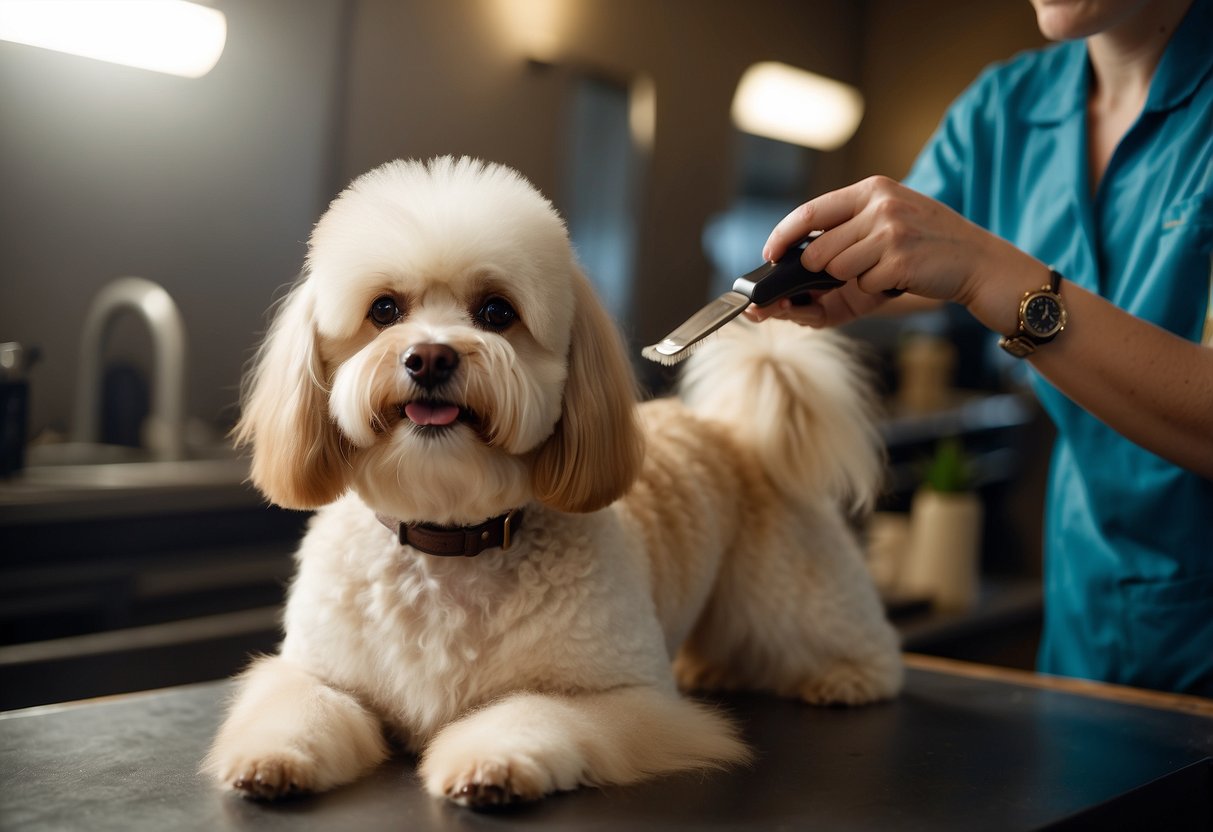
Seasonal Grooming Considerations
Dog grooming needs differ with the seasons, requiring specific care during summer and winter to ensure your pet stays comfortable and healthy.
Summer Care
During summer, dogs often need more frequent grooming to combat the heat and humidity. Brushing becomes essential to remove loose hair, which helps keep them cool. Some breeds may benefit from a trim, but shaving should be approached cautiously, as some dogs’ coats protect against sunburn and overheating. Bathing should be increased to help remove dirt, pollen, and allergens that can accumulate. Extra attention should be given to ear cleaning to prevent infections from increased moisture. Regular nail trimming is also necessary, as active summer play can cause nails to wear differently.
Winter Care
Winter grooming focuses on maintaining a healthy coat and skin to protect against the cold. Less frequent bathing is advisable to avoid stripping natural oils that help insulate the dog. Moisturizing the skin with conditioners can prevent dryness and cracking. Regular brushing remains important to avoid matting, which can reduce the coat’s effectiveness against cold weather. Checking and cleaning the paws is crucial, as ice, snow, and salt can cause irritation or injury. Trimming the hair around the paws can help prevent ice balls from forming. Keeping the dog dry is vital to avoid hypothermia, making towel drying and sometimes blow-drying necessary after wet walks.
Special Grooming Situations
The grooming needs of puppies, senior dogs, and dogs with skin conditions require special attention. These unique situations demand tailored care to maintain the health and happiness of the dogs.
Puppies
Grooming puppies involves patience and gentle handling. It is crucial to introduce grooming tools and routines slowly to avoid overwhelming them. Brushing should be frequent to acclimate them to the process and prevent matting. Bathing should use mild shampoos to protect their delicate skin. Ears and nails must be checked regularly to avoid infections and discomfort. Early grooming helps puppies develop positive associations with the experience, leading to easier maintenance as they grow.
Senior Dogs
Senior dogs often have specific grooming needs due to age-related changes. Their skin may become dryer or more sensitive, requiring gentle, moisturizing shampoos. Extra care should be taken when brushing to avoid irritating their skin. Regular check-ups for lumps, bumps, and skin conditions are essential given their age. Arthritis or joint pain may make grooming sessions more challenging, so it’s important to provide comfortable surfaces and take breaks as needed. Oral hygiene also becomes increasingly important as dental issues are common in older dogs.
Dogs with Skin Conditions
Dogs with skin conditions require specialized grooming to manage their symptoms and prevent flare-ups. Medicated shampoos and conditioners prescribed by a vet are often necessary to treat issues like allergies or dermatitis. Avoiding fragrances and harsh chemicals can help reduce irritation. Regular but gentle brushing can help distribute natural oils and keep the skin healthy. Monitoring the dog for signs of discomfort or worsening conditions post-grooming is key, as adjustments to the routine may be needed. In some cases, professional grooming assistance might be required to ensure the dog’s comfort and health.
Professional Grooming vs. Home Care
Choosing between professional grooming and home care largely depends on the dog breed, the owner’s skills, and the dog’s needs.
Professional groomers offer a range of services. They have specialized equipment and expertise to handle different coat types. Dogs with thick, curly, or long hair, like Poodles, may benefit from professional grooming.
Home care can be a cost-effective option. Regular brushing, nail trimming, and bathing can be done at home with the right tools. Owners of short-haired breeds, such as Beagles, may find home grooming manageable.
Certain breeds require specific grooming techniques. For example, terriers often need hand-stripping, a task best left to professionals. On the other hand, breeds with minimal grooming needs can thrive with basic home care.
Consistency is key in both professional grooming and home care. Regular grooming appointments or scheduled home sessions help maintain a dog’s health and appearance.



